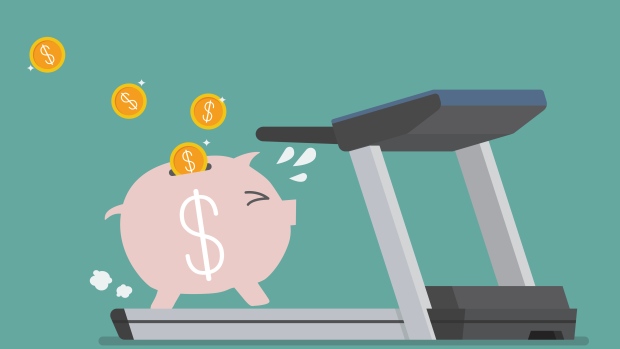
Payback Time: The myth that keeps Canadians on a financial treadmill
by Dale JacksonHere’s a neat little experiment. If the conversation wanes at your next social function, start an informal survey on personal debt. Ask for terms and interest rates on mortgages, home equity or consumer lines of credit, credit cards, student debt – whatever.
It’s likely your subjects won’t know off hand. For the few that do, ask if they know how that rate translates into cold, hard cash over the life of the loan – total interest in dollars. Fewer will know.
If they stick around, ask what their annual expected rate of return is on their investments such as registered retirement savings plans, tax-free savings accounts, company pensions – even their homes. Most people with a realistic retirement plan would say between five and seven per cent depending on their age and tolerance for risk.
The result will likely reveal a myth that fuels the Canadian economy, boosts banks to record profits and keeps countless households on financial treadmills: the myth that debt and investing are compatible.
Simple arithmetic can debunk that myth by revealing the power of compounding for both borrowers and investors. Here’s how.
Interest on personal debt can range from about three per cent annually on a mortgage to 30 per cent for a credit card sponsored by the big retail chains. As an example, let’s go somewhere in the middle with nine per cent on a typical consumer line of credit. $10,000 borrowed at a rate of nine per cent compounded monthly will generate $14,514 in interest over 10 years. Put another way, that $10,000 becomes $24,514 after a decade, growing by nearly 150 per cent.
Here’s another neat little experiment. Flip that arithmetic around and ask an advisor if they can invest in anything that can generate a guaranteed, nine per cent tax-free annual return and turn $10,000 into $24,514 after 10 years.
If they are qualified and honest, they can’t. Anyone with an abacus should know paying down higher interest debt is the most prudent investment, but you won’t hear that from the finance industry or bank-sponsored pundits. That’s because debt-laden investors feed two revenue streams for banks: interest on the debt in the lending division, and fees in the investment arm. Some banks will even lend you money to invest with their investment arms.
Debt has consumed Canada. It’s easily available to buy what we want, smooth out the rough spots or help build equity over time. Rock-bottom borrowing rates have enticed the median Canadian household to carry $1.77 in debt for every dollar they bring in each year, according to Statistics Canada. In the 1990s, that figure was below 90 cents. Fifteen per cent of our disposable income now goes toward servicing debt. As interest rates inevitably rise, the debt burden will compound for Canadian investors who are heading toward and in retirement.
And that brings us to Payback Time. Each week, this column will cut through the noise and deal with the issues that forge a stable retirement; the most effective ways to reduce debt, when debt is manageable enough to seek better returns in the markets, how much risk is required to meet investment goals, and how to set net worth benchmarks.
With longer life expectancy and fewer guaranteed pension benefit plans, more Canadian retirement and semi-retirement portfolios are exposed to the whims of the broader financial markets. Payback Time will look at strategies to minimize risk and maximize returns, money-saving tax plans, the most effective investment products with the lowest fees, what to expect from an investment advisor, the advantages of asset diversification, adjusting to major life changes, home ownership as an investment, how the Canada Pension Plan and Old Age Security factor into retirement, regulatory issues, fraud warnings, and estate planning.
Most importantly, it will provide the tools to avoid that dreaded treadmill and turn the tables by actually investing in the same revenue streams that make the banks rich.
Investing for a prosperous and secure retirement is more than just a series of unrelated wagers. It’s a long game that requires planning and discipline for that day when it’s Payback Time.
Payback Time is a weekly column by personal finance columnist Dale Jackson about how to prepare your finances for retirement. Have a question you want answered? Email dalejackson.paybacktime@gmail.com.